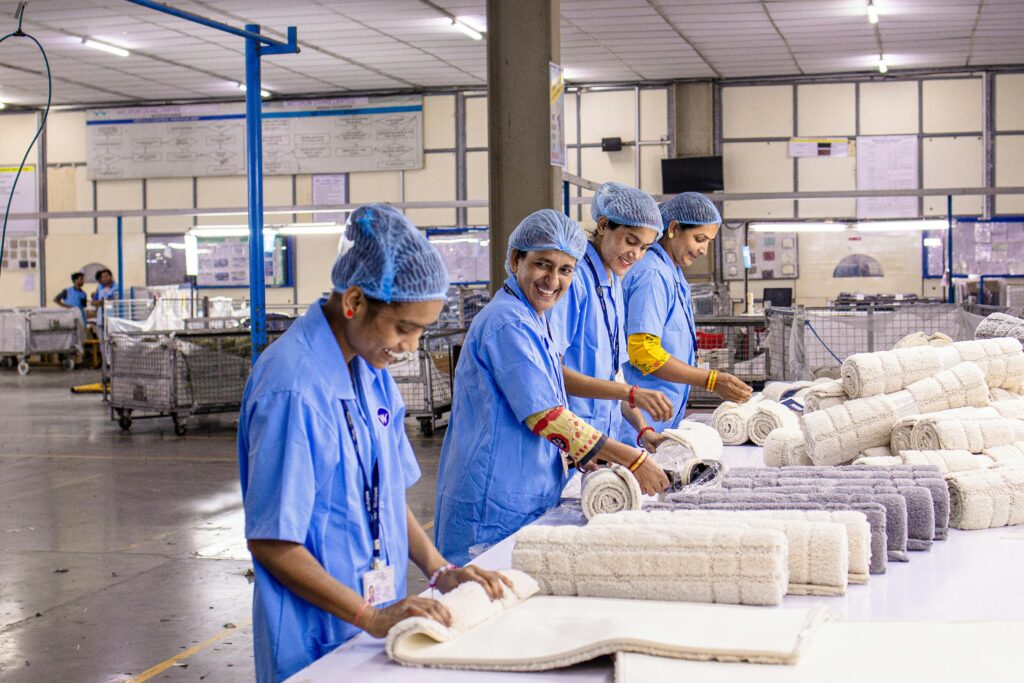Automation vs. shortage of skilled workers: Can robots compensate for the shortage of personnel in production?
Could robots and artificial intelligence (AI) be the solution to the shortage of skilled workers in production? Where does automation reach its limits? Find out here!
Table of contents
- Automation vs. shortage of skilled workers: Can robots compensate for the shortage of personnel in production?
- What roles do machines and AI play in modern production?
- What are the limits of automation and why are human specialists still indispensable?
- What are the solutions to the shortage of skilled workers in production?
Estimated reading time: 4 minutes
What roles do machines and AI play in modern production?
The situation is dramatic: According to the Handelsblatt the labor shortage threatens to "paralyze half of Germany". To counteract this, more and more companies are relying on support from machines and AI technologies.
According to the trend index of the automatica 2023which surveyed around 1,000 employees in Germany, around 50 % of all respondents in Germany see the use of robots as an "important to very important way" to remedy the shortage of skilled workers in industry.
Around 84 percent believe that skilled workers will be relieved by machines, especially when it comes to potentially dangerous tasks.
Machines and other automation processes, including AI-controlled processes, have been increasingly used in production for several years now. They take over or help with the following tasks, for example:
- Assembly and production
- packaging
- Optimization of warehouse management
- Maintenance of machines
- Transportation (e.g. by self-propelled vehicles)
What are the limits of automation and why are human specialists still indispensable?
Does this mean that humans will soon be completely superfluous in production? That everything can be done by machines and AI? Not at all. Because there are limits to automation - at least for the time being. Specifically, there are three main aspects:
1. Complexity and flexibility:Automation systems rely on fixed processes. Humans, on the other hand, are able to find creative and flexible solutions to complex or unforeseen problems.
2. Fault detection and rectification:Human specialists are still needed to identify errors and make corrections that go beyond the programmed limits.
3. Technical restrictions:AI technologies often reach their limits in areas such as language and contextual understanding - at least up to today. However, it is quite possible that this will change in the coming years.
What are the solutions to the shortage of skilled workers in production?
In addition to the use of AI and robotics, there are other approaches to solving the problem of the shortage of skilled workers. One possible solution - but one that is not without its drawbacks - is to employ and retrain or train career changers. Although this makes it easy to recruit new employees for production, they first have to be retrained.
Another solution is temporary work or employee leasing. Here, companies borrow the workers they need from another company for a certain period of time - without employing them permanently in their own company. This has the advantage that companies can react flexibly to fluctuating personnel requirements without entering into long-term commitments. This means maximum cost efficiency, predictability and flexibility! Temporary work is also an extremely popular solution, especially in production, to cover the need for new staff despite a shortage of skilled workers.
We have specialized in temporary employment for around 20 years. We focus primarily on temporary workers from Eastern Europe (e.g. Romania, Poland, the Czech Republic, Croatia, the Baltic states, etc.).
If you have any questions about temporary staffing in production or would like to know exactly how we can help you, please contact us! Our team of experts will answer your query within two working days.
Similar topics
